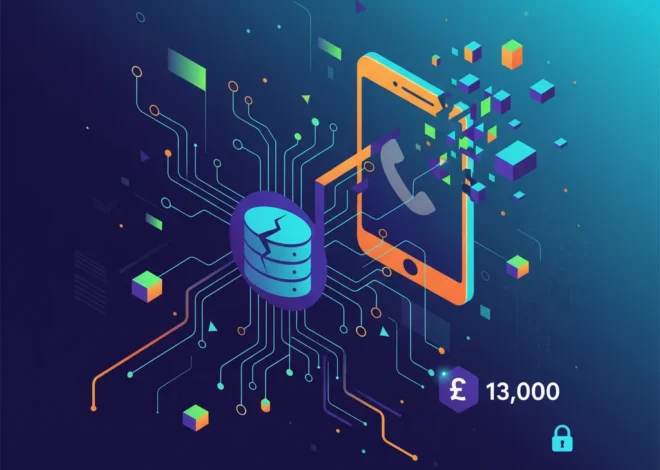
The Cryptographers Who Lost Their Keys: A Modern Fable for Tech Startups
In the world of technology, there are stories that are almost too perfect, too ironic to be true. This is one of them. Imagine the world’s most elite group of locksmiths—the people who design unpickable locks and write the manuals on physical security—accidentally locking themselves out of their own headquarters. And not just locked out, but they’ve also lost the one-and-only master key, forever.
That’s essentially what just happened in the digital world. The International Association for Cryptologic Research (IACR), a prestigious organization dedicated to the science of secure communication, had to cancel its own board elections. The reason? They lost the encryption key needed to tally the votes. In their own words, it was an “honest human mistake.”
This single event is more than just a moment of profound irony; it’s a critical lesson for every developer, entrepreneur, and tech professional. In an age where we are building ever-more complex systems powered by artificial intelligence and sophisticated software, this incident serves as a humbling reminder of the most persistent vulnerability in any system: the human element. Let’s decrypt what happened and what it means for the future of cybersecurity and innovation.
The Anatomy of a Digital Disaster
First, let’s understand the gravity of the situation. The IACR isn’t just any tech group; it’s a global non-profit organization whose members are the leading minds in cryptography. These are the academics and researchers who pioneer the very encryption methods that protect everything from your bank account to national secrets. For this group, of all groups, to lose a key is the equivalent of the Federal Reserve losing the combination to its gold vault.
The election process for their board of directors was, as you’d expect, designed to be highly secure. They used a sophisticated end-to-end verifiable voting system called Helios. In simple terms, each vote is encrypted to ensure privacy and integrity. To decrypt the final tally and reveal the winner, a master decryption key is required. That key, generated and held by the election chair, was irretrievably lost.
Unlike your email password, there is no “Forgot My Key” button. In cryptography, losing the key means the data it protects is lost forever, sealed in a digital tomb. The IACR had no choice but to scrap the entire election and start over. While embarrassing, their transparency is commendable. It highlights a universal truth: even the best-laid plans and most advanced technologies can be undone by a simple, human slip-up.
Europe's AI Gambit: Why France and Germany are Building a Digital Fortress
Human Error: The Undefeated Champion of Breaches
Hackers with hoodies and glowing green code on screens make for great movie villains, but the reality of cybersecurity failures is often far more mundane. Year after year, comprehensive industry reports point to the same culprit as the primary cause of security incidents and data breaches: us. Humans.
According to IBM’s 2023 Cost of a Data Breach Report, a staggering 74% of breaches involve the human element, which includes everything from falling for a phishing attack to simple misconfigurations and errors. The IACR’s lost key falls squarely into this category. It wasn’t a malicious actor or a flaw in the programming of the voting system; it was a process failure executed by a person.
This is a terrifying and liberating thought for startups and established companies alike. Terrifying because it means your biggest threat might be sitting in your own office (or home office). Liberating because, unlike a state-sponsored cyber-attack, this is a problem you have a significant degree of control over. It shifts the focus from building impenetrable digital walls to building resilient processes and a security-conscious culture.
The IACR incident proves that pedigree and expertise are not shields against basic operational failures. Your team can be filled with PhDs and brilliant engineers, but if the process for managing something as critical as an encryption key is flawed, your entire system is fragile. This brings us to a crucial comparison for any modern tech organization.
Below is a simplified comparison of manual versus automated approaches to managing cryptographic keys, a core challenge highlighted by the IACR’s predicament.
| Feature | Manual Key Management (The “Human” Approach) | Automated Key Management System (KMS) |
|---|---|---|
| Creation & Storage | Generated by a human; stored on a local drive, USB stick, or written down. Single point of failure. | Generated within a secure hardware module (HSM); stored and managed by a distributed, redundant cloud service. |
| Access Control | Relies on physical security and individual trustworthiness. Difficult to audit. | Granular, policy-based access (IAM roles). All access attempts are logged and auditable. |
| Redundancy | Depends on manual backups. If the primary and backup are lost or compromised, the key is gone. | Built-in geographic redundancy and automated backups. Designed for high availability and disaster recovery. |
| Risk of Error | High. Keys can be accidentally deleted, lost, or mishandled, as seen with the IACR. | Low. Automation minimizes human error in the key lifecycle (rotation, deletion, etc.). |
| Best For | Individual developers for non-critical projects, offline backups. | Production systems, SaaS applications, enterprise data protection, any system where key loss is catastrophic. |
Fortifying the Human Link with AI and Automation
So, if humans are the weak link, how do we strengthen the chain? The answer, paradoxically, is more technology—but technology applied thoughtfully to augment human processes, not just replace them.
This is where artificial intelligence, machine learning, and robust automation come into play. Modern cybersecurity is no longer just about firewalls and antivirus software; it’s about intelligent systems that can prevent, detect, and respond to threats, including those caused by internal human error.
Consider the “lost key” problem. Modern cloud platforms like AWS, Google Cloud, and Azure have sophisticated Key Management Services (KMS). These systems are designed precisely to prevent what happened to the IACR. Keys are generated, stored, and used within highly secure, redundant hardware. Access is controlled by strict, auditable policies. No single person can simply “lose” the key because no single person ever truly possesses it. The system manages the key, and humans are granted temporary, programmatic access to use it.
Furthermore, AI and ML algorithms can monitor access patterns and flag anomalous behavior. If a developer who normally only accesses a database from 9-5 suddenly tries to export a sensitive key at 3 AM from an unrecognized location, an intelligent system can automatically block the attempt and raise an alert. This is the essence of a modern, zero-trust security architecture—trust, but verify with intelligent automation.
The AI Elephant in the Room: Why Google's CEO Is Warning You to Be Skeptical
Actionable Takeaways for the Modern Tech World
The IACR’s misfortune provides a masterclass in what not to do. Here are some concrete takeaways for anyone building or running a tech-driven organization:
- Automate Critical Processes: Any security process that relies on a single human to perform a critical task perfectly every time is a time bomb. For things like key management, credential rotation, and deployment, leverage automated systems. Use a managed KMS. Use infrastructure-as-code. Reduce the surface area for “honest mistakes.”
- Never Roll Your Own Crypto: This has been a mantra in the programming community for years, but it bears repeating. The IACR didn’t fail at designing crypto; they failed at implementing the operational procedures around it. For your startups‘ application, use well-vetted, standard libraries and managed services for anything security-related. Your job is to build your product, not to become a cryptography expert.
- Implement the Principle of Least Privilege: No one should have access to more than they absolutely need to do their job. The concept of a single “election chair” holding a master key is a classic example of a single point of failure. Modern systems should use multi-party controls (requiring multiple people to approve a critical action) to distribute trust and prevent unilateral mistakes or abuse.
- Plan for Failure: The most resilient systems are not the ones that never fail, but the ones that can recover gracefully when they do. What is your disaster recovery plan if a critical database is wiped? Or if your primary cloud region goes down? Or if, yes, a master key is lost? Run drills, test your backups, and assume that things will break.
Conclusion: The Ghost in the Machine is Human
The story of the cryptographers who lost their key will likely become a cautionary tale told to junior developers for years to come. It’s a stark and public reminder that the most brilliant algorithms and the most secure software are only as strong as the human processes that govern them. According to a security researcher who commented on the incident, even with the best systems, “there is always a ‘human in the loop’ that can make mistakes” (source).
For the tech industry, this is a call for humility and a renewed focus on operational excellence. As we race towards a future defined by greater complexity, AI, and automation, we must dedicate just as much ingenuity to building robust, human-proof systems as we do to building powerful technologies. The goal of innovation shouldn’t be just to create unbreakable codes, but to create resilient systems that can withstand the most predictable vulnerability of all: a simple, honest mistake.


